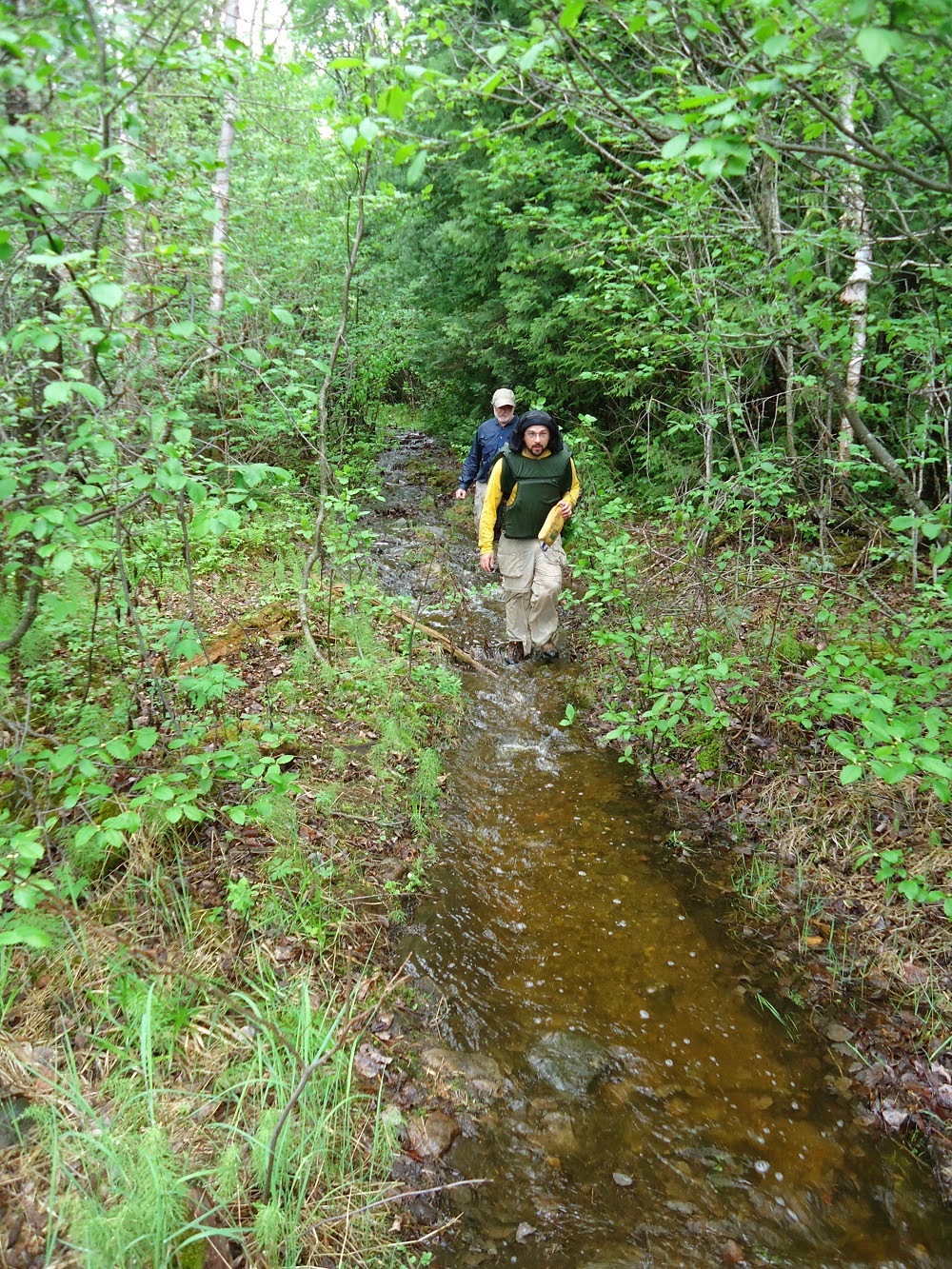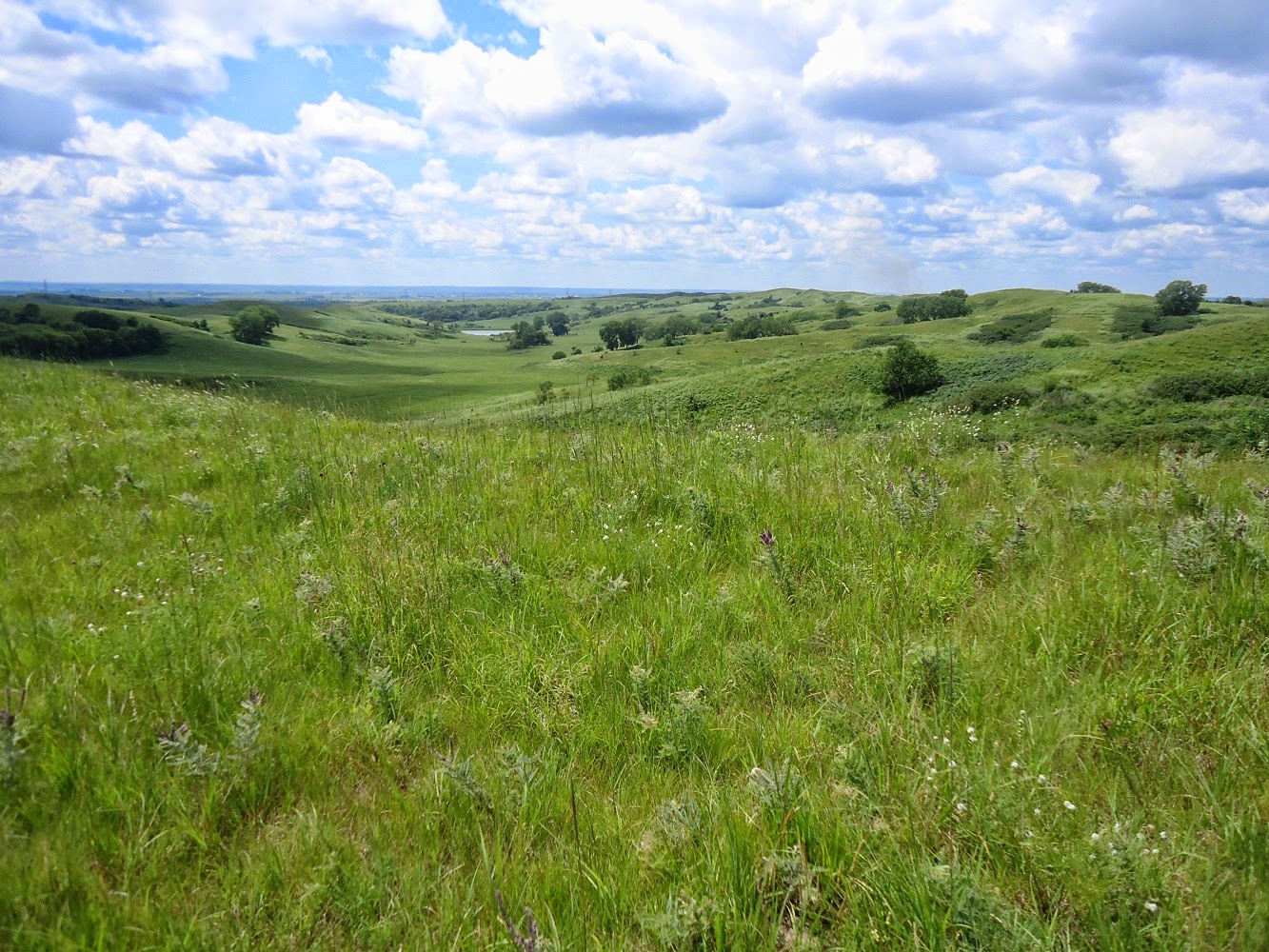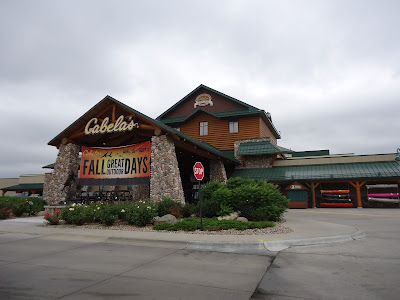Quetico Provincial Park: Day 5
 |
| Jonathan and Dad at the end of Badwater portage. |
Day 1
Day 2
Days 3&4
Day 5
Our last night in Quetico, it rained. It rained a lot. Our air mats were like rafts, the only things keeping us from from sleeping in a puddle. It rained so hard, it also dripped water on our faces. Knowing it was probably going to rain for a few more days, I was OK that we wouldn't be spending anymore nights in that tent. (Dad and Bart, however, remained dry in their tent.)
Despite trying to keep some wood dry under our shade tarp, we were not able to start a fire in the morning. We had also run out of fuel, so we couldn't make oatmeal for breakfast. We had three granola bars left and salted nut rolls. Those were our breakfast options. I chose granola bar. And within a short time, we had packed up camp and set out on Eyelet Lake for the last time. I am sure we all wondered if we'd ever see that place again.
The trip back out took the same route as the trip in (except for one moose trail), but it didn't have the same atmosphere. For one thing, the first day was hot and sunny. This day was dark, wet, and felt ominous (to me). My feeling was validated when we were back in one of the marshy streams between lakes and, pushing forward over a shallow point, I heard a CRUNCH. "Crunch" is not a sound you want to hear in a Kevlar canoe. I thought we'd cracked the canoe, which would have been a terrible start to a long day, and would also mean we might be stuck there for a few days because we had many more very long lakes to cross.
It wasn't a crack. *whew* But it was Bart's seat breaking. A metal piece that holds one side of the seat up broke. Bart was not happy. Imagine having up to 20 miles of canoeing left to do that day and you can only sit on one butt cheek. As we continued to press on that day, he tried sticking a few different things in there to hold the seat up. Eventually, he found the thing that would work best, which was a sponge. It doesn't sound like it would work, but it did. Only it would fall out sometimes and he'd have to fix it back up just about every time we stopped.
We ate the fastest lunch ever in a stop on Badwater Lake. We didn't even sit down. We just stood in the woods and shoveled handfuls of peanuts and raisins into our mouths.
Another thing about traveling days is that your feet are wet all day. On fishing days, some of us would try to get in and out of the canoe without stepping in the water, but on portaging days that attempt would be futile. For one thing, you'd never get through Badwater portage.
I've crudely drawn a yellow line in the map in this photo to show you the lakes we went through. Portages are marked with a red "P" and a red line. Look at how long that red line is on Badwater portage. It's at least a mile long. The length is not its greatest challenge. That would be the fact the the trail first is a rocky stream uphill, then a bog which is lined with slippery logs (but if they weren't there, you'd sink), and then down a rocky stream. This time, it wasn't just a stream, it was a gushing stream because we'd had so much rain.
It was difficult, but it was also really fun! (Maybe that's just me.) I wish I'd been able to take photos on the trail. It was very pretty. I was also the only one who didn't fall, and that's probably because I was going at half the speed as anyone else. Like before, we carried one load a ways then went back for another and so on in stages. Dad and Bart carried the canoes but we helped carry their packs part of the time. Each of us did parts of the portage more than once. I think it took us an hour and a half.
SMALL.jpg) |
| Our approximate route in yellow. Click to enlarge. |
 |
| Rehydrating after Badwater portage. |
As you can see from the map, there was still a long way to go. We still had Quetico and Beaverhouse to cross, and they're both big lakes. At that point, the wind picked up. Up until then, we'd had still water the entire trip. Now, we faced waves. It was no longer safe to paddled straight across the middle. We needed to stay at a certain angle into the waves, paddling from point to point so we weren't out on open water. It took a lot of effort. For me, I couldn't leisurely switch paddling from side to side. I had to keep paddling on one side to keep the waves from turning the canoe. I basically paddled on one side for three hours. If this was an exercise I was doing for exercise' sake, I most certainly would have quit after ten minutes. But when you're on the water and your life could literally depend on it, you just keep paddling and ignore the discomfort. Besides, you get to live with the knowledge that you did something awesome.
We were able to relax a little when we got to Quetico River. The river flows West from Quetico to Beaverhouse, so we were going with the current. Around this area are signs of the industry that once took place there--logging. You can see supports from an old wooden bridge in the water where there was once a road. There are rapids and quite a drop near the end of the river, so we got out and portaged to Beaverhouse. Along that portage trail is an old rusted out car from a previous century.
We paddled across Beaverhouse Lake (in which I saw no actual beaver houses), which seemed to take forever. Our journey over the water ended finally when we paddled up part of a little river to the entry point. As we were picking up our packs to start the quarter mile trek to the parking lot (kind of a strange concept after being in the wilderness for five days), two young park rangers were coming down the trail to start their own trip. We talked to them a little bit and they said they were going on a six-day trip to clean up some portages, removing dead falls from the trails. They pronounced "portage" the French way. They also hadn't heard of Eyelet Lake. When they looked for it on a map they said, "you can get in there?" That should tell you how remote we were. Like my dad said, probably the last time anyone was in Eyelet was the last time they were in Eyelet, two years ago.
We packed up the truck and began the two or so hour drive back to International Falls, Minnesota. We had to stop at a store for Bart to buy wild rice (and some of us, the sodas we'd been craving). I have several Canadian friends from whom I've learned about a flavor of potato chips not available in the US:
All Dressed flavor. It's sort of all the flavors. Vinegar and various vegetable flavors and spices. I don't even know. Ruffles was the only brand I saw in that store, but I know Old Dutch is a popular brand that makes All Dressed. (Another Canadian flavor I didn't get is ketchup.)
It was a bit of a strange feeling to go from seeing no other people, no running water nor electricity, cooking your food over a flame and all that to gas station bathrooms, figuring out Canadian money, and pop and potato chips.
We stayed in the Hilltop Motel again and got Border Bar pizza delivered. We showered off the dirt (my hair at that point was like one big single hair--I used almost an entire tube of motel shampoo). We stayed up the the late hour of 8-something P.M., watching a show on museum mysteries.
In the morning, we got pop tarts and bad coffee from the motel office and took off.
The rest of the trip was just driving. We were satisfied with our trip, with the good fishing, but maybe a little sad to be going back to regular life, and a little uncertain about future trips. How many more chances will we get? I've written out in these blog posts as much as I can remember in an effort to hang on to the memories. Jonathan asked me why I think anyone (you readers) would care about stuff like what we ate. But I mostly included that for myself, and maybe it'll give you a bigger picture about what it was like.
My only souvenirs are a Beaverhouse patch I got from the park office, the maps in the photo above (from Bart) and the photos I took. I hope I never forget this amazing trip!
 |
| Bart, Jonathan, me and the Whiskey Jack Chaser paddle. |
 |
| Only in Canada. |
It was a bit of a strange feeling to go from seeing no other people, no running water nor electricity, cooking your food over a flame and all that to gas station bathrooms, figuring out Canadian money, and pop and potato chips.
We stayed in the Hilltop Motel again and got Border Bar pizza delivered. We showered off the dirt (my hair at that point was like one big single hair--I used almost an entire tube of motel shampoo). We stayed up the the late hour of 8-something P.M., watching a show on museum mysteries.
In the morning, we got pop tarts and bad coffee from the motel office and took off.
The rest of the trip was just driving. We were satisfied with our trip, with the good fishing, but maybe a little sad to be going back to regular life, and a little uncertain about future trips. How many more chances will we get? I've written out in these blog posts as much as I can remember in an effort to hang on to the memories. Jonathan asked me why I think anyone (you readers) would care about stuff like what we ate. But I mostly included that for myself, and maybe it'll give you a bigger picture about what it was like.
My only souvenirs are a Beaverhouse patch I got from the park office, the maps in the photo above (from Bart) and the photos I took. I hope I never forget this amazing trip!


Comments
Post a Comment